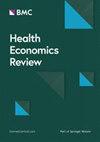骨科服务的经济成本:一个低收入国家三级医院的卫生系统成本分析
IF 2.7
3区 经济学
Q1 ECONOMICS
引用次数: 0
摘要
创伤在全球呈上升趋势,对低收入和中等收入国家的影响尤为严重,占可通过手术治疗的疾病负担的 88%。在造成最高负担的同时,低收入和中等收入国家也拥有最少的资源来有效解决这一日益增长的负担。对这些环境中服务成本的研究主要集中在最常见的外伤上,而对其他外伤的研究则缺乏证据。本研究旨在通过对马拉维的两家三级医院进行综合成本分析,填补低收入环境下骨科服务成本方面的空白。我们采用了混合成本计算方法,同时使用了自上而下和时间驱动的活动成本法。我们收集了从 2021 年 7 月到 2022 年 6 月为期一年的有关资源利用、人员成本、药品、耗材、资本成本、实验室成本、放射服务成本和管理费用的数据。我们对审查期间所有可用的患者档案进行了回顾性审查。服务使用强度的假设是基于病历中观察到的使用模式。所有费用均以 2021 年美元表示。我们审查了 2372 份患者档案,其中 72% 为男性。所有患者的住院时间中位数为 9.5 天(8-11 天)。整个治疗路径的平均加权治疗成本各不相同,髁上骨折为 195 美元(136-235 美元),近端尺骨骨折为 711 美元(389-931 美元)。主要成本构成是人员(30%)和药品及用品(23%)。在特定诊断成本中,住院时间是最主要的成本驱动因素,这也是造成两家医院治疗成本差异巨大的原因。这项研究强调了骨科治疗在低收入和中等收入国家的关键作用,以及对特定环境成本数据的需求。该研究强调了医院之间成本动因和资源利用模式的差异,强调了量身定制的医疗保健规划和资源分配方法的重要性。了解低收入和中等收入国家的外科干预成本可以为政策决策提供依据,改善骨科基本服务的可及性,从而减轻与创伤相关的疾病负担。我们建议今后的研究应重点评估骨科干预措施的成本效益,尤其是那些在现有文献中尚未分析过的干预措施。本文章由计算机程序翻译,如有差异,请以英文原文为准。
The economic costs of orthopaedic services: a health system cost analysis of tertiary hospitals in a low-income country
Traumatic injuries are rising globally, disproportionately affecting low- and middle-income countries, constituting 88% of the burden of surgically treatable conditions. While contributing to the highest burden, LMICs also have the least availability of resources to address this growing burden effectively. Studies on the cost-of-service provision in these settings have concentrated on the most common traumatic injuries, leaving an evidence gap on other traumatic injuries. This study aimed to address the gap in understanding the cost of orthopaedic services in low-income settings by conducting a comprehensive costing analysis in two tertiary-level hospitals in Malawi. We used a mixed costing methodology, utilising both Top-Down and Time-Driven Activity-Based Costing approaches. Data on resource utilisation, personnel costs, medicines, supplies, capital costs, laboratory costs, radiology service costs, and overhead costs were collected for one year, from July 2021 to June 2022. We conducted a retrospective review of all the available patient files for the period under review. Assumptions on the intensity of service use were based on utilisation patterns observed in patient records. All costs were expressed in 2021 United States Dollars. We conducted a review of 2,372 patient files, 72% of which were male. The median length of stay for all patients was 9.5 days (8–11). The mean weighted cost of treatment across the entire pathway varied, ranging from $195 ($136—$235) for Supracondylar Fractures to $711 ($389—$931) for Proximal Ulna Fractures. The main cost components were personnel (30%) and medicines and supplies (23%). Within diagnosis-specific costs, the length of stay was the most significant cost driver, contributing to the substantial disparity in treatment costs between the two hospitals. This study underscores the critical role of orthopaedic care in LMICs and the need for context-specific cost data. It highlights the variation in cost drivers and resource utilisation patterns between hospitals, emphasising the importance of tailored healthcare planning and resource allocation approaches. Understanding the costs of surgical interventions in LMICs can inform policy decisions and improve access to essential orthopaedic services, potentially reducing the disease burden associated with trauma-related injuries. We recommend that future studies focus on evaluating the cost-effectiveness of orthopaedic interventions, particularly those that have not been analysed within the existing literature.
求助全文
通过发布文献求助,成功后即可免费获取论文全文。
去求助
来源期刊

Health Economics Review
Multiple-
CiteScore
3.90
自引率
4.20%
发文量
59
审稿时长
13 weeks
期刊介绍:
Health Economics Review is an international high-quality journal covering all fields of Health Economics. A broad range of theoretical contributions, empirical studies and analyses of health policy with a health economic focus will be considered for publication. Its scope includes macro- and microeconomics of health care financing, health insurance and reimbursement as well as health economic evaluation, health services research and health policy analysis. Further research topics are the individual and institutional aspects of health care management and the growing importance of health care in developing countries.
 求助内容:
求助内容: 应助结果提醒方式:
应助结果提醒方式:


